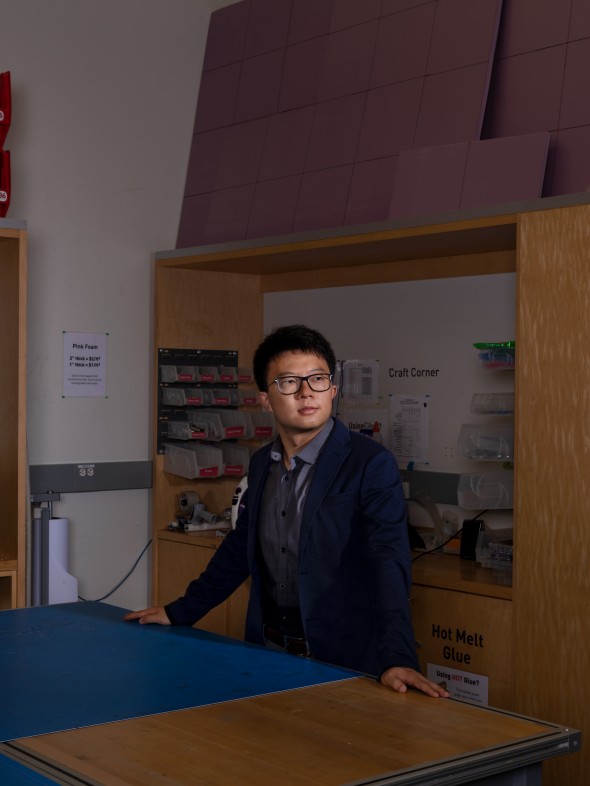
Jinxing Li
32
Stanford University
Country of birth: China
His tiny robots can be programmed to treat infection
Jinxing Li pioneered the use of tiny robots—just a few micrometers across—to treat disease in a living animal.
Li designed rocket-like micromotors that run on gut fluids in a living animal and biodegrade after completing their mission.
The bots are made from polymer-coated balls of magnesium, which react with stomach acid to create hydrogen bubbles that propel them through the gut. Li and collaborators loaded one of the polymer layers with antibiotics, and the bots were administered to mice with stomach infections. On entering the stomach, they fired into the lining and stuck to the stomach wall before gradually dissolving to release their cargo over a long period to treat the infection.
Li recently showed that magnetically powered nanomotors cloaked in membranes from platelet cells could navigate efficiently through blood to remove toxins and pathogens without being cleared by the immune system or getting covered in sticky biomolecules, as foreign particles normally do.
The next step is to create “cyborg cells,” says Li, by taking the body’s immune cells, which hunt and destroy bacteria or cancer cells, and merging them with nanobots to navigate toward the disease site.